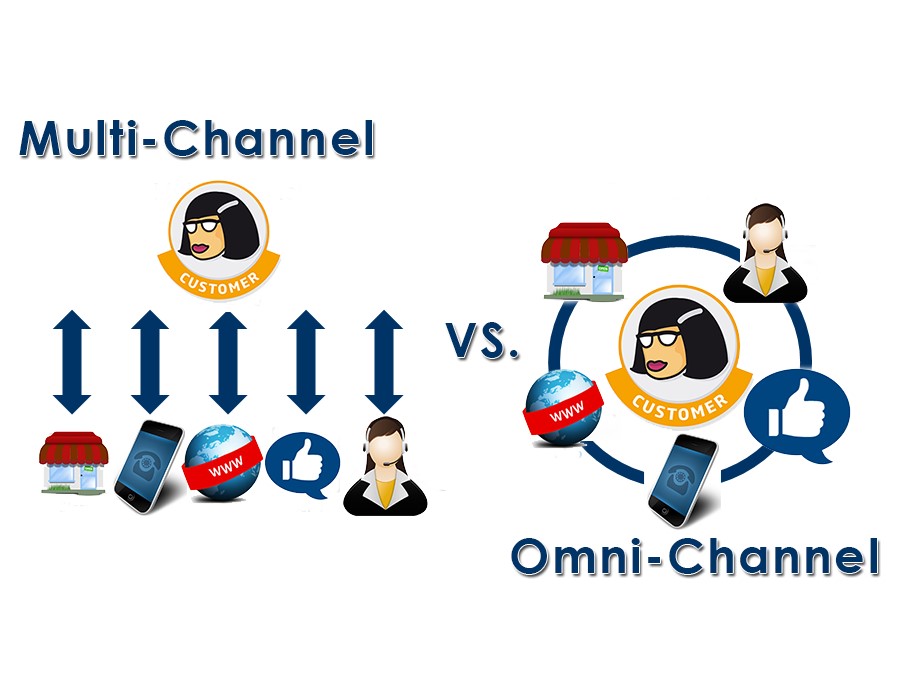
Defining Multichannel and Omnichannel Marketing: Key Differences
Multichannel and omnichannel marketing are two distinct approaches to reaching customers through various platforms. However, they differ significantly in strategy and execution. In multichannel marketing, businesses engage with customers across multiple, separate channels such as social media, email, websites, and physical stores. Each channel operates independently, allowing businesses to reach a broad audience. However, these channels often lack integration, which can lead to a disjointed customer experience. While customers may encounter your brand on several platforms, the messaging and experience on each channel may vary.
In contrast, omnichannel marketing focuses on creating a seamless, unified experience across all channels. Rather than treating each platform as an isolated entity, omnichannel integrates them to ensure consistency in messaging, design, and customer experience. Whether a customer interacts with your brand on a mobile app, website, or in-store, the transition between these touchpoints feels connected and cohesive. This approach allows businesses to provide a more personalized experience, as customer data is shared across platforms, enhancing engagement.
When comparing Multichannel vs Omnichannel Marketing, the customer experience is a key differentiator. Multichannel marketing enables brands to maintain a presence on various platforms, but without synchronization, customers may feel disconnected. On the other hand, omnichannel marketing prioritizes the overall journey, creating a more engaging and consistent experience. Strategically, omnichannel marketing requires greater coordination and investment in technology. However, it delivers higher customer satisfaction and loyalty by focusing on the entire customer lifecycle rather than individual touchpoints.
Customer Experience: How Multichannel and Omnichannel Impact Engagement
The customer experience is significantly impacted by whether a business adopts a multichannel or omnichannel marketing approach. In a multichannel setup, customers can interact with a brand through multiple platforms. This includes social media, email, and physical stores. However, because these channels often operate independently, customers may encounter varying levels of service or different messaging across platforms. This inconsistency can lead to confusion and lower satisfaction, as the customer journey may feel fragmented. While multichannel marketing offers more touchpoints, it lacks the smooth, cohesive experience that many modern consumers expect.
In contrast, omnichannel marketing focuses on delivering a consistent, unified experience across all platforms. Customers experience the same messaging, offers, and brand identity regardless of how they interact with the business. Whether they begin their journey on social media, continue on a website, and complete a purchase in-store, omnichannel ensures a seamless transition between each touchpoint. This level of consistency is crucial because it reinforces trust and engagement, making customers feel understood and valued. When comparing Multichannel vs Omnichannel Marketing, the consistency of omnichannel marketing leads to higher customer satisfaction and loyalty.
Consistency in omnichannel marketing matters because it directly impacts how customers perceive and engage with a brand. When customers encounter the same experience across platforms, it reduces friction and enhances the overall journey. In contrast, the lack of synchronization in multichannel marketing can lead to frustration, as customers may need to repeat actions or encounter different offers depending on the platform. By prioritizing a smooth, integrated experience, omnichannel marketing not only increases engagement but also drives long-term customer loyalty by making every interaction meaningful and connected.
Integrating Technology for Omnichannel and Multichannel Marketing
Technology plays a pivotal role in both multichannel and omnichannel marketing, with CRM systems, automation, and data analytics at the forefront of these strategies. Customer relationship management (CRM) platforms, such as Salesforce or HubSpot, help businesses track and manage customer interactions across various channels. In multichannel marketing, CRMs can ensure that each platform captures and stores customer data, but since these channels often work independently, insights may not be shared effectively across platforms. This limits the ability to provide a unified customer experience.
For omnichannel marketing, integrating CRM systems is crucial to achieving consistency across all touchpoints. By centralizing customer data, businesses can create a single, comprehensive view of each customer’s journey. This allows for personalized interactions, as businesses can access and use customer behavior data regardless of the channel they engage on. Additionally, automation tools like ActiveCampaign or Marketo enhance both multichannel and omnichannel marketing by enabling automated workflows. However, in omnichannel strategies, automation is more advanced, ensuring a seamless customer journey across platforms.
Data analytics tools, such as Google Analytics and advanced platforms like Segment, also play a key role in optimizing both multichannel and omnichannel strategies. Analytics allow businesses to track key performance indicators (KPIs), measure customer behavior, and identify trends. However, when comparing Multichannel vs Omnichannel Marketing, omnichannel platforms like Adobe Experience Cloud provide deeper, more integrated insights, allowing businesses to create a continuous experience across channels. By leveraging these technologies, businesses can better manage customer interactions, track engagement, and optimize their marketing strategies for higher customer satisfaction and retention.
Pros and Cons of Multichannel Marketing
Multichannel marketing offers several benefits for businesses looking to expand their reach and engage with customers across various platforms. One of the main advantages is the ability to tailor content and strategies to each specific channel. For example, businesses can create social media campaigns that focus on brand awareness while using email marketing for direct offers or promotions. This flexibility allows companies to target different audiences on the platforms they use most, increasing the potential for engagement and conversions. Additionally, multichannel marketing provides the opportunity to experiment with different platforms to see which generates the most traction for specific products or services.
However, one of the significant challenges of multichannel marketing is the risk of creating disjointed customer experiences. Since each channel operates independently, customers may encounter inconsistent messaging, offers, or service quality depending on where they engage with the brand. This fragmentation can lead to confusion or frustration, ultimately reducing customer satisfaction and loyalty. While multichannel marketing offers broad coverage, it requires careful coordination to prevent misalignment between platforms. Without integration, businesses risk losing customers who expect a seamless journey from one touchpoint to another.
Despite these challenges, businesses can succeed with a multichannel approach by focusing on the unique strengths of each platform and ensuring some level of consistency. By strategically planning campaigns and monitoring customer behavior, businesses can use data to refine their efforts and improve performance across individual channels. Additionally, while comparing Multichannel vs Omnichannel Marketing, it’s essential to recognize that multichannel marketing can still be effective when personalized content is delivered through each platform. By maintaining brand consistency and adjusting campaigns based on platform-specific engagement, businesses can create successful multichannel strategies that drive growth.
Advantages of Omnichannel Marketing for Seamless Customer Journeys
Omnichannel marketing offers distinct advantages by creating a unified, seamless experience across all platforms. Unlike multichannel approaches, where each platform operates independently, omnichannel marketing integrates customer touchpoints to deliver a consistent brand experience. Whether a customer interacts with your business through social media, in-store, or via email, the messaging, offers, and overall experience remain aligned. This unified approach ensures that customers feel connected throughout their journey, no matter how or where they engage with your brand. By integrating data across all channels, businesses can personalize interactions based on real-time customer behavior, enhancing engagement and driving conversions.
One of the primary long-term benefits of omnichannel marketing is its impact on customer retention and brand loyalty. Customers today expect a seamless experience that meets their needs at every touchpoint. When businesses can deliver that, it strengthens customer trust and satisfaction, making them more likely to return. An omnichannel strategy also makes it easier to provide tailored recommendations, personalized promotions, and follow-up communication, which further encourages repeat business. Over time, this connected approach fosters deeper customer relationships, turning one-time buyers into loyal advocates.
When comparing Multichannel vs Omnichannel Marketing, the omnichannel approach stands out for its ability to create a holistic customer experience. With every interaction seamlessly linked, customers enjoy a smoother journey. This reduces friction and increasing their likelihood of staying loyal to the brand. Businesses that invest in omnichannel strategies benefit from stronger retention rates and higher customer lifetime value, ultimately driving sustained growth. This approach positions companies to meet modern consumer expectations while enhancing both customer satisfaction and long-term profitability.
Conclusion
In conclusion, understanding the differences between Multichannel vs Omnichannel Marketing is crucial for developing effective strategies that enhance customer engagement. While multichannel marketing allows businesses to reach a broad audience through various platforms, it can lack the integration needed for a seamless customer experience. On the other hand, omnichannel marketing focuses on creating a connected, unified journey, which builds customer loyalty and satisfaction. Both approaches have their merits, but businesses must choose the one that aligns best with their goals and resources. By prioritizing the customer experience, companies can ensure sustained success and stronger brand relationships.


